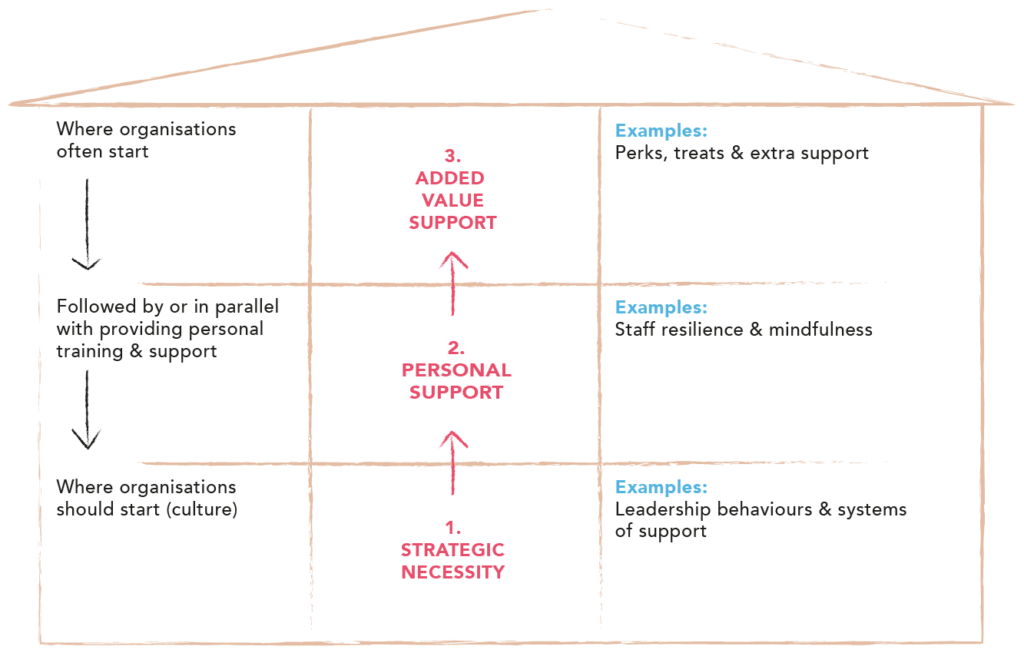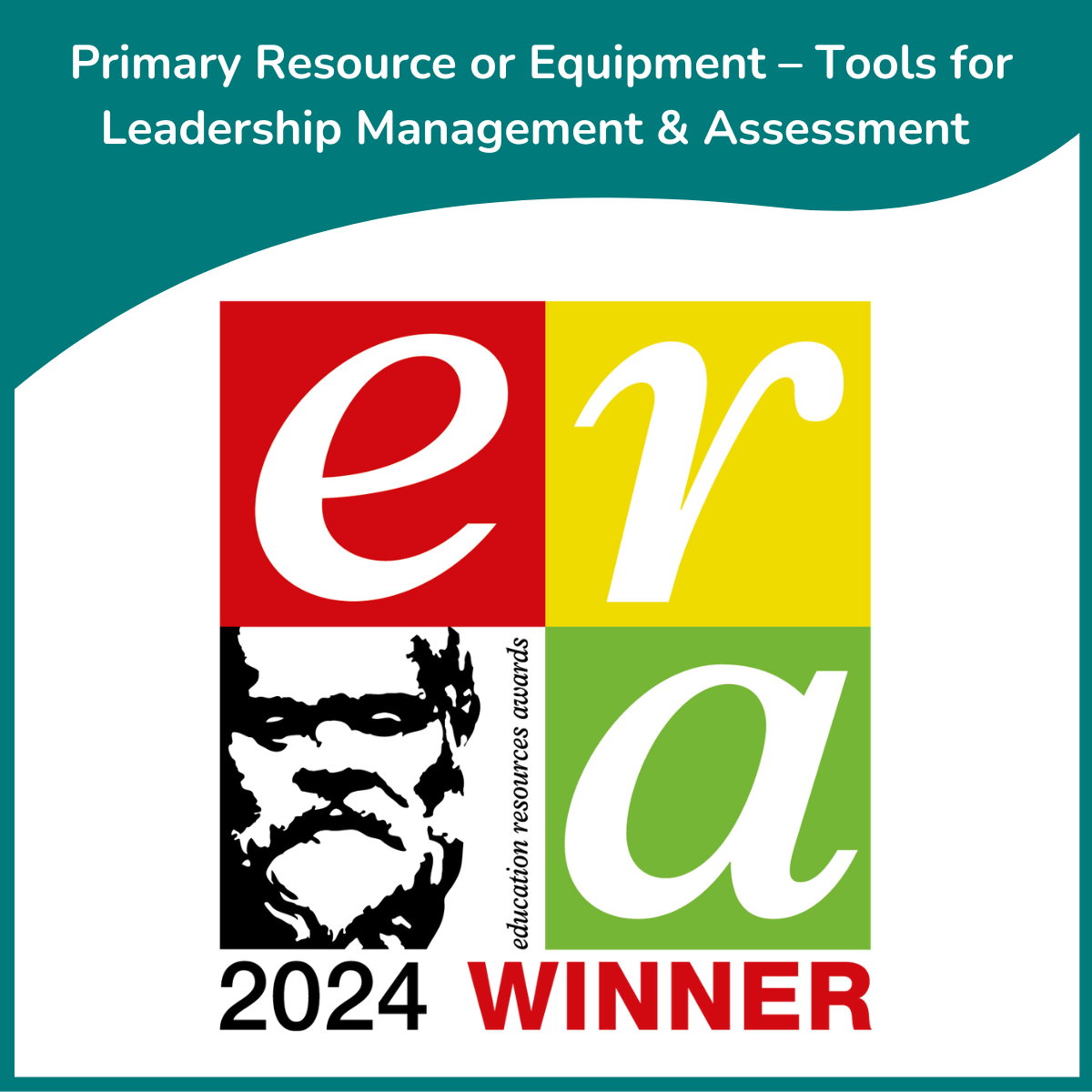
If yours is a typical school, then it is likely to be under real strain over the next few years putting further challenge on school staff wellbeing.
Teacher shortages are well reported, with recruitment targets missed since 2012 and more than a third of newly appointed teachers leaving within 5 years.
School budgets have been cut in real terms and student numbers are growing. In addition, the current pandemic brings in the challenge of online education.
Those schools that are best able to tackle these challenges and create a culture where staff want to work and thrive, are going to attract and retain the best staff.
Improved staff wellbeing will also lead to lower costs. These include the costs of recruitment, staff absences, cover, grievances and counselling. Those schools failing to address this effectively will get left further and further behind.
Evidence of the importance of school staff wellbeing
In schools, similar to most organisations, there are three key groups of people;
- staff
- students (customers) and
- stakeholders (shareholders). These include parents, school governing bodies, the Government and school inspectors.
It’s right there should be a strong focus on students, and there is obviously concern at meeting the needs of stakeholders’, including achieving the right inspection grade.
Yet, while there has been a move towards better supporting staff, in too many cases their needs come second or third. If you look after your staff in the first place, they will take care of your students and the stakeholders will also be satisfied and happy.
They are your most expensive and best asset and while it is easy to say this, behaviours every day need to demonstrate that this is the case.
There is strong evidence to show that improving staff wellbeing increases school results. Below is one study and you can see more evidence here.
A major study, carried out by Birbeck College, University of London, involving 24,100 staff, in 246 primary schools and 182 secondary schools, demonstrated that improving staff wellbeing led to a statistically significant increase in SATs results in primary schools, and an increase in the percentage of students achieving 5+ GCSEs in secondary schools. In both environments, it also increased value added progress.
The researchers were excited by the outcomes, as their work also suggested it was easier to deliver these improvements through staff wellbeing compared with a range of other more usual interventions.
Other research from business and the Health Service has also shown a strong correlation between self-reported wellbeing and health related outcomes. For hospitals, there is a clear link with mortality rates – so the lower the self reported wellbeing of staff, the higher the infection rate and the more likely patients will die.
Too many schools do not address the right areas when trying to improve staff wellbeing
Despite more school leaders beginning to tackle this area, too many do not have a clear plan of how best to go about it and often start in the wrong place. They tend to look for quick fixes, and as a result are often dealing with symptoms, rather than causes or prevention.
Providing free fruit or cakes, organising staff events, giving resilience or mindfulness training or a wellbeing day, where staff can focus on themselves, their fitness or receive some form of pampering, is unlikely to deliver significant long-term change or value.
There is nothing wrong with any of these, though starting with them or making them the your focus is likely to mean staff simply continue to face the same daily challenges and pressures and nothing changes.
Improving staff wellbeing is a bit like building a house and working on the above areas would mean building from the top down – putting the top and middle floors in first. You need to first lay down strong foundations if you want it to stand tall and last the ravages of time.

Simple steps to improve your staff wellbeing
Laying strong foundations for staff wellbeing mean building it into the school fabric and everyday culture. This largely covers two key areas:
- The behaviours of leaders
- Systems of support
1. The behaviour of leaders
The biggest impact on staff wellbeing comes from line managers.
When getting this wrong, it’s not always their fault, but more about their knowledge and experience. One day they are a teacher or support staff member, the next they are expected to lead a team, often with no or little training.
They learn the hard way through trial and error and are sometimes simply unaware of the impact their behaviour has on others.
“The thing that is causing people to get ill at work and adversely affect their quality of working life is line managers who are not socially and interpersonally skilled. They don’t have the soft skills that are needed.”
Professor Sir Cary Cooper, leading UK expert on organisational wellbeing
But the good news is these skills are all learnable competencies.
Research at Goldsmiths, University of London established twelve leadership competencies that would help massively with your staff wellbeing, preventing and reducing stress in staff. They are different to those included in national qualifications.
Ensuring all leaders in your school are aware of these competencies is a great place to start. Challenge all your leaders and line managers to self-assess against those categories and take action to improve their performance.
2. Systems of support
These behaviours need to be supported with effective systems and processes. Performance management, appraisals, meeting practices, vision and values, data, finance, planning are all examples.
While everyday behaviours are the most important element, without adding these to the mix it will be much harder to improve staff wellbeing.
It’s a long term approach
Improving wellbeing and performance is not a quick fix. It is about consistent practice and embedding behaviours and systems into the school culture.
As a result, it just becomes part of what you do each day.
If you have any questions about or would like any advice or support on improving staff wellbeing, you can get in touch here.


















